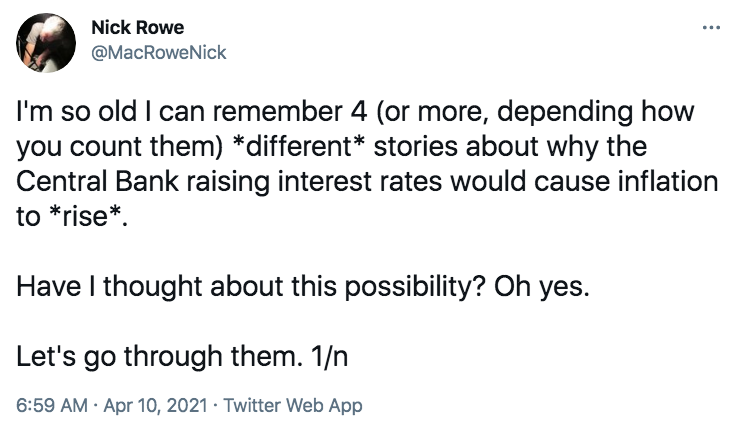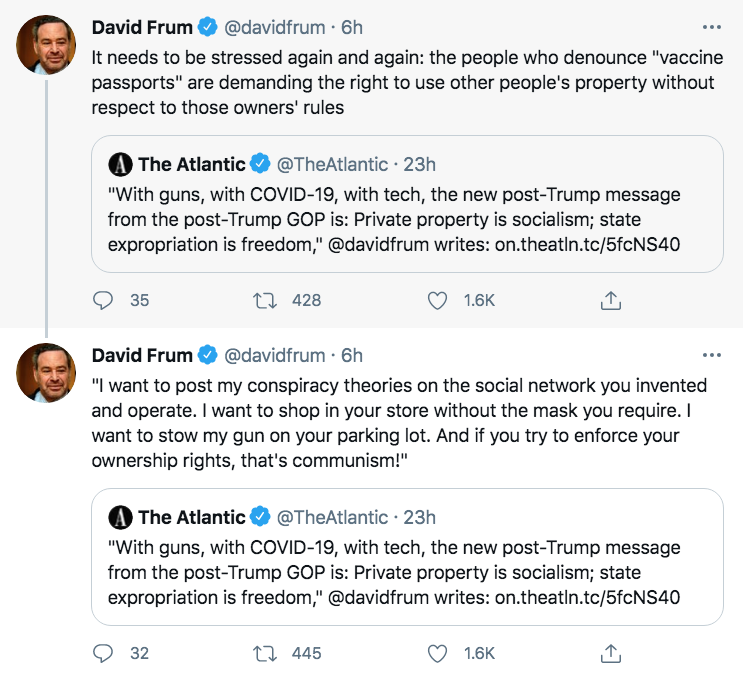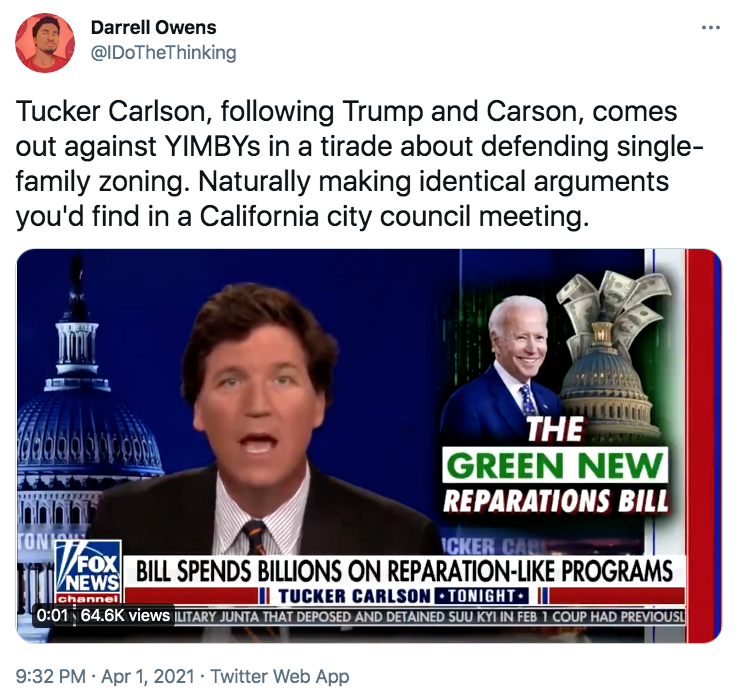Here’s what I saw over the past three months:
Newer Films:
Our Time (Mexico) 3.8 Carlos Reygadas is probably the least famous of the four directors in Mexico’s “new wave”, but in my view he’s the best. Each of his films seems to have at least one jaw dropping sequence, and this is no exception. The cinematography is excellent, and is best seen in either the theatre or on a really good TV. The second half of this three-hour film is often extremely dark—I had to eliminate all ambient light. You’ll never see a more beautiful airplane landing sequence than the 6 minutes that begin around the 1:54 mark. Some critics didn’t like the film, but I think they confused the views of the characters with the views of the director. It’s not an upbeat movie with easy answers to life’s struggles.
The White Tiger (India) 3.6 A poor man’s Parasite. Cinematic comfort food packed with lots of visual information (India’s messy congestion in 4k images) and lots of social science and psychology. A mile wide and an inch deep, but pretty entertaining. One of those films where you say to yourself, “pretty good, but probably the best film this director will ever make.”
Made You Look (US) 3.5 I’m a sucker for documentaries about art forgers.
The Booksellers (US) 3.2 Back when I lived in Boston I used to go to antiquarian book shows once a year. This brought back fond memories.
Nomadland (US) 3.2 Somewhat sentimental, but there are some nice bits here and there. I wish it had done a better job of portraying why people enjoy the nomadic lifestyle. Perhaps the film would be of more interest to people who have only lived in big cities, and for which this sort of life seems exotic.
The Trip to Greece (UK) 3.1 The 4th (and last?) in the series. I sort of enjoyed it, but I’d say it’s strictly for boomers. Younger viewers will be bored by the lame boomer humor.
The Widowed Witch (China) 2.9 I didn’t particularly enjoy this film, but it was clearly made by a director with promise.
Older Films:
L’Avventura (Italy, 1960) 4.0 Not necessarily the “best”, but perhaps the most representative of all European art film. It gets better with each viewing. What a way to kick off the 1960s.
2046 (Hong Kong, 2004) 3.9 Perhaps the coolest looking film ever made, although the version I saw on Amazon didn’t seem to be in hi-def. In my mind, I always link this with Three Times, a film that came out exactly one year later. Both involved nostalgia for the 1960s, both featured a song by Nat King Cole, and both represented the end of an era for each director. And both films were drop dead gorgeous.
The Bad Sleep Well (Japan, 1960, CC) 3.9 The first time I’d seen this Kurosawa film, and I’d say it’s his most underrated effort. Loosely based on Hamlet, but you’ll be disappointed if you expect another Throne of Blood. Rather than Shakespeare, expect a great film noir—one of the best ever. I didn’t even recognize that Toshiro Mifune was the star. Released in the same year as Psycho, L’Avventura, The Apartment, Peeping Tom, Breathless, La Dolce Vita, When a Woman Ascends the Stairs, Late Autumn, The Naked Island and lots more. That’s almost a masterpiece a month. And what did 2020 bring us? Tenet. LOL.
Psycho (US, 1960) 3.9 Seeing this again I noticed the connection to both Touch of Evil (1958) and Dr. Strangelove (1964), three black and white films made in the color era, by arguably the three greatest film directors of all time, at least in the English language. (One consensus rating by critics puts all three of these films in the top 50 of all time, and three other films by these three directors are in the top three spots overall.) They must have each recognized that they were working at another level from other American directors, and pushed each other to ever-greater heights.
Local Hero (UK, 1983, CC) 3.9 Bill Forsyth’s masterpiece. Most people wouldn’t rate this quite so high, but I love everything about the film. It has echoes of I Know Where I’m Going, and lots of the sort of random whimsical humor you get in other Forsyth films. Third time I’ve seen it, and it holds up very well.
Shanghai Express (US, 1932, CC) 3.9 “It took more than one man to change my name to Shanghai Lily.” My favorite Marlene Dietrich film, which means one of my favorite films period. Sternberg provides some gorgeous scenes, including one of the all-time great images of any Hollywood film. Third time I’d seen this one and it gets better with age.
Miller’s Crossing (US, 1990) 3.9 I had not seen this Coen brothers film since it came out, and 31 years later it seems even better than the first time around. A near perfect film. Fine acting, excellent screenplay, good music, and some spectacular set pieces.
My Man Godfrey (US, 1936) 3.8 A delightful screwball comedy.
Vengeance is Mine (Japan, 1979, CC) 3.8 An engrossing Imamura film about a serial killer. The murders look like real life, not movie murders.
The Day After (Korea, 2017) 3.8 This is the first Hong Sang-soo film that fully put me under its spell. The reviews were not that great, but I loved it. I don’t know of any director that treats his audience with more respect. Min-hee Kim is so appealing she almost doesn’t seem human.
Early Spring (Japan, 1956, CC) 3.8 There are few things in life that give me more pleasure than watching films directed by Ozu, even when (as in this case) I can’t figure out why. Like the novelist Murakami, he casts a spell over his audience. But it’s hard to see how he does it.
Late Autumn (Japan, 1960, CC) 3.8 A very characteristic Ozu film, this one in color.
Foreign Correspondent (US, 1940, CC) 3.8 An underrated Hitchcock film, containing one of cinema’s great visual puns (when Joel McCrea grabs onto a neon hotel sign.)
The Killing (US, 1956, CC) 3.8 An almost perfect noir. The only thing that keeps it from rating 4.0 is that it’s less ambitious than some of Kubrick’s later films.
Paths of Glory (US, 1957, CC) 3.7 Prior to 1964 Kubrick made some very fine films. But in each case they were films that one could imagine being made by a different director. As good as they were, his reputation entirely rests on his final 7 films.
Arsenic and Old Lace (US, 1944, CC) 3.7 A classic screwball comedy, directed by Capra. Mental illness, mass murder, and lots of other really funny stuff. With Peter Lorre at his obsequious best.
The Cranes Are Flying (Soviet Union, 1957, CC) 3.7 The first major film of the post-Stalin liberalization. Lots of beautiful cinematography, innovative for its time.
Street Without End (Japan, 1934, CC) 3.6 Naruse’s final silent film builds to a powerful climax.
Pierrot le Fou (France, 1965, CC) 3.6 Most people will wonder why I give this a good review, while film buffs will wonder why I didn’t give it 4.0. I am dazzled by Godard’s brilliant style, but his films don’t connect with me in the way that something like Chungking Express does (a film heavily influenced by Godard.) Anna Karina is reason enough to watch.
Pale Flower (Japan, 1964, CC) 3.6 A very cool yakuza noir. I’d describe this film as “mid-century modern”. It was made at a very distinctive moment in time—the mid-1960s—and it shows. Do we still have those moments? Maybe I’m too old to see them. For me, 2021 doesn’t seem much different from 1995.
A New Leaf (US, 1971, CC) 3.6 Seems a bit dated, but a quite charming film. Elaine May did a great job.
The Adjuster (Canada, 1991, CC) 3.6 This is one of Egoyan’s most entertaining films. Almost every scene is skillfully directed, and there’s lots of subtle humor.
Badlands (US, 1973, CC) 3.5 I didn’t like this film quite as much as when it first came out. As with Taxi Driver, it doesn’t seem quite as impressive now that some the stylistic innovations have been adopted by other directors. I’m surprised this is rated so highly by critics (#136 on the TSPDT list.) Maybe people romanticized criminals a bit more back in the nihilistic 1970s. My favorite part was seeing Martin Sheen drive his 1959 Cadillac off road, right across the western plains of South Dakota and Montana. Is there any better image of complete freedom?
Picnic at Hanging Rock (Australia, 1975, CC) 3.5 I re-watched this the day after I saw L’Avventura, and my initial reaction was disappointment. The films have similar plot elements, but the Antonioni film is far better. Nonetheless, as the film went along I grew to appreciate it in its own terms.
Saint Jack (1979) 3.5 Peter Bognanovich directed this Paul Theroux novel. Ben Gazzara is very good in the starring role, and Denholm Elliot gives a haunting performance—much better than the showy acting that typically wins awards. Singapore has changed a lot in 50 years (the movie takes place in 1971.)
The Killing of a Chinese Bookie (US, 1976) 3.5 This John Cassavetes film also stars Ben Gazzara. It holds up very well after 45 years.
Imitation of Life (US, 1934, CC) 3.5 This film undoubtedly promoted better race relations during the 1930s, and yet today would be viewed as quite racist, at least by woke people. Fredi Washington played the light skinned black woman, and it was the only significant role in her career. Hollywood considered her too light for black roles, and in 1934 no white star would be allowed to kiss a black actress, even if she had relatively light skin. Thus she was only allowed to play a black passing as a white person. Oh, and it’s a tearjerker.
The Red Circle (France, 1970, CC) 3.5 Melville films with Alain Delon remind me a bit of early Clint Eastwood—not a lot of talking. The focus on details is a bit like Bresson films. He’s a very competent director that produces cool looking films that don’t quite rise to the level of being great art, but occasionally come close.
The Talk of the Town (US, 1942, CC) 3.5 A screwball comedy with Cary Grant, Jean Arthur and a bit more politics than usual.
Never Let Go (UK, 1960, CC) 3.5 Peter Sellers plays a mobster, which isn’t really his forte. But there’s a lot to enjoy in this British noir.
Eye on Istanbul (Turkey, 2016) 3.4 Documentary on Turkey’s greatest photographer.
Knight of Cups (US, 2014) 3.4 Watch this before you go to bed. You won’t enjoy the film, but you will have vivid dreams. And isn’t that the whole point of life?
Death Watch (France/Scotland, 1980, CC) 3.4 Interesting French film (with American actors) that I’d never heard of before. The real star here is Glasgow’s morbid architecture. More intelligent than the usual sci-fi film.
Xiao Wu (China, 1997, CC) 3.4 Jia Zhangke’s first film, made with a low budget and without any professional actors. It impressed Scorcese, which makes sense given that it has a bit of the feel of Taxi Driver.
The Steamroller and the Violin (Russia, 1961, CC) 3.4 People talk about how good Tarkovsky was right out of the gate with Ivan’s Childhood, but even this 45 minute student film was pretty impressive. It already features some Tarkovsky trademarks, like water dripping from a ceiling into a puddle.
Dishonored (US, 1931, CC) 3.4 Directed by Josef von Sternberg and starring Marlene Dietrich. Their pictures are always worth watching.
A Canterbury Tale (UK, 1944, CC) 3.4 The director (Michael Powell) surprises the viewer by failing to surprise the viewer, at least in the sort of way you’d expect in a mystery. A very laid back film, which is almost documentary-like in places. I suppose the lack of suspense was welcomed by audiences in 1944; their lives already had plenty of drama.
Only Two Can Play (UK, 1962, CC) 3.3 Peter Sellers is the reason to see this amusing British film.
Croupier (UK, 1995) 3.3 An entertaining way to learn a bit about the casino industry. Clive Owens looks the part.
Night and Day (Korea, 2008) 3.3 This Hong Sang-soo film is too long. It’s often amusing, but not as creative as some of his other films.
Apart From You (Japan, 1933, CC) 3.3 Another silent film by Naruse, this one only an hour long.
Barbarella (Italy/France, 1968, CC) 3.1 The world could only be 1968 once. Of course this is a bad film, but it would have been a wonderful film for teenage boys in 1968, and today for grown-ups it’s a fascinating look at 1968 style. That makes it a sort of camp classic. Perhaps Jane Fonda’s finest performance?
The Last Metro (France, 1980, CC) 3.1 This Truffaut film is well made but disappointingly bland. I don’t quite see what the director was trying to do.
A Genuine Forger (French, 2016) 3.1 For me, the most interesting part of the film was watching the forger (Guy Ribes) paint in the style of Picasso, Matisse, Leger, etc.
Mother Goose (US, 1964, CC) 3.1 Cary Grant’s final film.
Operation Petticoat. (US, 1959, CC) 3.0 Tony Curtis plays someone with a style that today might be seen as gay, but in a non-gay role. Of course gays didn’t exist in 1959 (at least not officially).
To The Wonder (US, 2012) 3.0 It’s hard to rate this Malick film, as it’s one of those movies that’s clearly made by a master, but doesn’t quite come alive. (Think of it as 4.0 on visuals and 2.0 on content.) It didn’t quite work for me, but I can see how others might fall under the spell. As usual, there is gorgeous cinematography.
Make Way For Tomorrow (US, 1937, CC) 3.0 When Leo McCarey won best director for The Awful Truth in 1937, he said they gave him the award for the wrong picture. Today, it’s obvious they got it right. In general, comedies from the 1930s hold up much better than dramatic films.
A Place in the Sun (US, 1951) 3.0 Is it wrong for us to root for Montgomery Clift to drown Shelley Winters? If Liz Taylor had looked at YOU with those eyes, would you do it?
49th Parallel (UK, 1941, CC) 3.0 This is one of Michael Powell’s weakest efforts, but it’s kind of interesting as a sort of quasi-documentary on Canada in 1940. Lawrence Olivier is pretty bad in a supporting role; Leslie Howard is somewhat better.
Mr. Blandings Builds His Dream House (US, 1948, CC) 2.9 This Cary Grant/Myrna Low comedy is a bit too bland. Grant plays a NYC ad executive who sends his daughters to a private school where they are indoctrinated in woke theories that our capitalistic system exploits the downtrodden. Plus ça change, plus c’est la même chose.
The Bachelor and the Bobby-Soxer (US, 1947, CC) 2.8 Cary Grant (sort of) dates a high school girl. A more innocent time.
The Hill of No Return (Taiwan, 1991) 2.8 Almost 3 hours of non-stop suffering in 1920s Taiwan.
Ministry of Fear (UK, 1943, CC) 2.8 A subpar Fritz Lang film, with a complicated and sort of pointless plot involving Nazi spies in Britain during the war.
The Getaway (US, 1972) 2.8 The film has not aged well. Sam Peckinpah’s style has been copied, and thus doesn’t seem at all distinctive today. And there’s not much more to the film, which features some horrendous acting by Ali McGraw. I did enjoy being reminded what the world looked like when I was 17. You could drive right into Mexico, and when you checked into a hotel you gave them a $5 deposit, no credit cards. It’s the cinematic equivalent of a 1972 house with orange shag carpeting.
Save the Green Planet! (Korea, 2003, CC) 2.6 Nice opening and ending, but the film is too long and it’s a hard slog through the (violent) middle sections.
Barefoot in the Park (US, 1967, CC) 2.6 Perhaps of slight historical interest due to its portrayal of NYC bohemians circa 1967, which must have already seemed quite dated by 1969. Jane Fonda is fine, while Robert Redford is simply not a very good actor. And based on this film, Neil Simon just doesn’t seem all that funny.
The Touch of Mink (US, 1962, CC) 2.6 Cary Grant, Doris Day, and some jokes about gay marriage. It’s amusing to think about how each generation tries to create a certain type of world, and their efforts are always sabotaged by the next.
The Morning After (US, 1986, CC) 2.2 Jane Fonda is annoying and Jeff Bridges is wasted. A bad screenplay and an unconvincing story.
The Wicker Man (UK, 1973, CC) 2.0 In most cases when someone refers to something as a cult classic it just means it’s a bad film. There are a couple scenes of interest, but don’t waste your time.
In terms of reading, I was blown away by several books by Arthur Schopenauer, including his magnum opus Will and Representation (which suggests that happiness is impossible), and his self-help book on how to be happy. I’ve also been reading Turgenev and Chekhov.




